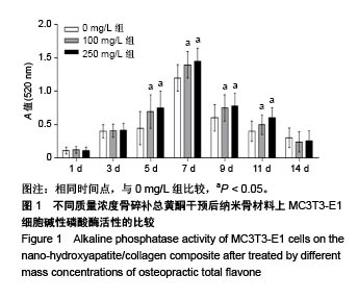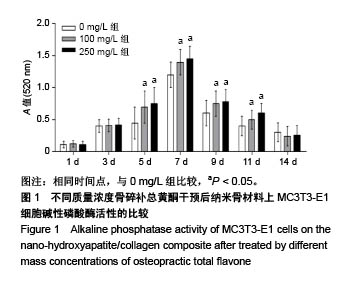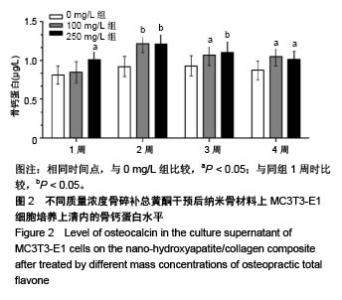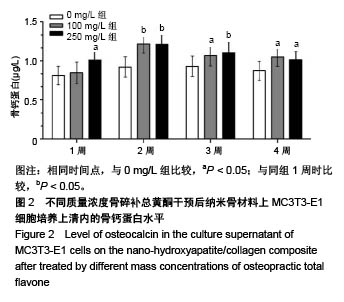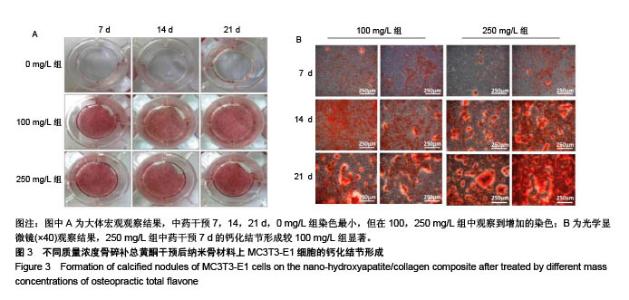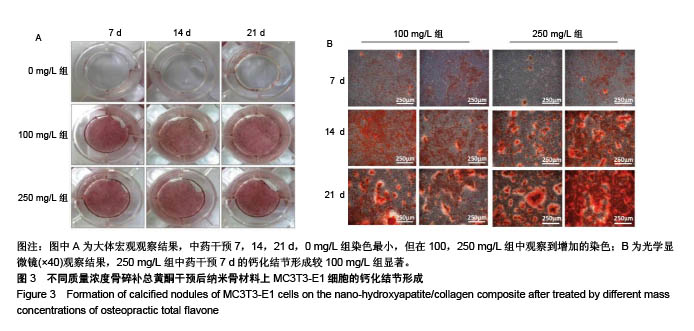| [1]Shakir M,Jolly R,Khan AA,et al.Resol based chitosan/ nanohydroxyapatite nanoensemble for effective bone tissue engineering.Carbohydr Polym.2017;139:317-327.[2]周静,冯卓卓,罗洁,等.纳米支架材料在骨组织工程应用中的优势[J].临床口腔医学杂志,2018,34(10):633-635.[3]李晋玉,赵学千,孙旗,等.骨碎补总黄酮的实验及临床研究概况[J].中国骨质疏松杂志,2018,24(10):1357-1364.[4]冯庆玲,崔福斋,张伟.纳米羟基磷灰石胶原骨修复材料[J].中国医学科学院学报,2002,24(2):124-128.[5]李晋玉.骨碎补总黄酮联合纳米骨材料对成骨细胞增殖分化及血管新生的影响[D].北京:北京中医药大学,2018.[6]国家药典委员会中华人民共和国药典(一部)[M].北京:中国医药科技出版社,2010:121. [7]史岩,马秋野,喻一东,等.骨碎补总黄酮促进骨质疏松性骨折愈合中参与Wnt/β-catenin信号通路的初步研究[J].中医药学报, 2018,46(2):49-52.[8]尹文哲,张小玲,叶义杰,等.骨碎补对微重力下共培养骨细胞中成骨细胞分化的影响[J].中医药学报,2017,45(4):16-20.[9]齐鹏飞,尹文哲,孙奇峰,等.失重下骨碎补总黄酮抑制JNK通路促间充质干细胞增殖的研究[J].中医学报, 2016,31(11): 1742-1745.[10]孙奇峰,尹文哲,高原,等.失重下骨碎补总黄酮经MAPK通路促间充质干细胞向成骨细胞分化研究[J].中医药学报, 2016,44(4): 10-13.[11]刘伟,赵劲民,苏伟,等.骨碎补总黄酮可促进兔骨髓间充质干细胞的增殖和分化[J].中国组织工程研究与临床康复, 2011,15(32): 6021-6026.[12]舒晓春,刘君静,朱丹华,等.不同浓度的骨碎补总黄酮对大鼠骨髓间充质干细胞向成骨细胞分化的影响[J].中国病理生理杂志, 2010,26(7):1261-1264.[13]Song S,Gao Z,Lei X,et al.Total Flavonoids of Drynariae Rhizoma Prevent Bone Loss Induced by Hindlimb Unloading in Rats.Molecules.2017;22(7):1033.[14]王鑫众,张利恒,罗浩,等.强骨胶囊与骨瓜提取物注射液治疗骨质疏松性股骨骨折的价值分析[J].中国药物经济学, 2019,14(1): 44-47.[15]李刚建,闵奇,赵鑫.强骨胶囊联合骨瓜提取物注射液治疗骨质疏松性股骨骨折的临床研究[J].现代药物与临床, 2018,33(5): 1135-1139.[16]翟景艳.强骨胶囊治疗老年Colles骨折术后的临床疗效[J].中国民康医学,2017,29(12):53-54.[17]栾小红.强骨胶囊结合仙灵骨葆胶囊治疗骨质疏松性股骨骨折34例[J].河南中医,2014,34(10):1949-1950.[18]刘国辉,陈东,杨述华,等.强骨胶囊治疗骨质疏松性股骨转子间骨折的临床观察[J].中西医结合研究,2010,2(1):4-6.[19]高焱.骨碎补总黄酮治疗骨折延迟愈合和骨不连[J].中医正骨, 2007,19(7):11-12,82.[20]李慧英,孟东方,阮志磊.骨碎补总黄酮对激素性股骨头坏死血钙、血磷及空骨陷窝率的影响[J].中华中医药杂志, 2016,31(12): 5352-5354.[21]阮志磊.骨碎补总黄酮对激素性股骨头坏死的实验研究[D].郑州:河南中医学院,2015.[22]王月芬.强骨胶囊治疗成人股骨头缺血性坏死216例[J].河南中医,2009,29(6):572-573.[23]杨成.钻孔减压术配合强骨胶囊治疗成人股骨头缺血性坏死疗效观察[J].实用中医药杂志,2017,33(5):493-494.[24]赵秀敏,艾红军,常新.成骨细胞和破骨细胞的传导通路和相关因子[J].中国实用口腔科杂志,2009,2(3):176-179.[25]李彬,张柳.RUNX2与骨代谢的调控[J].中国骨质疏松杂志, 2009, 15(1):63-67.[26]徐成峰,胡大海,赵周婷,张万福,白晓智,蔡维霞.兔骨髓间充质干细胞体外分离培养及多向诱导分化[J].中国组织工程研究与临床康复,2010,14(6):1002-1005.[27]Zhang L,Hu Y,Sun,CY,et al.Lentiviral sh RNA silencing of BDNF inhibits in vivo multiple myeloma growth and angiogenesis via down-regulated stroma-derived VEGF expression in the bone marrow milieu.Cancer Sci. 2010; 101(5):1117-1124.[28]张贤,朱丽华,钱晓伟,等.杜仲醇提取物诱导骨髓间充质干细胞成骨分化中的Wnt信号途径[J].中国组织工程研究, 2012,16(45): 8520-8523.[29]Zhou PR, Liu HJ, Liao EY, et al.LRP5 polymorphisms and response to alendronate treatment in Chinese postmenopausal women with osteoporosis. Pharmacogenomics. 2014;15(6):821-831. |
